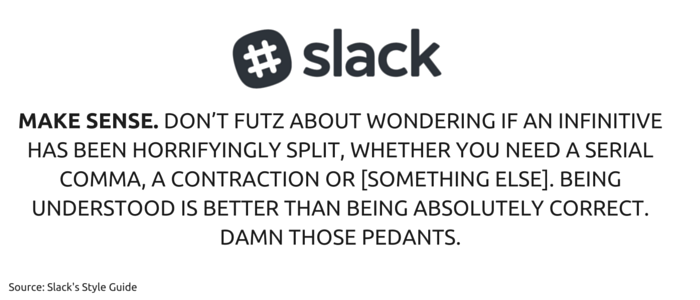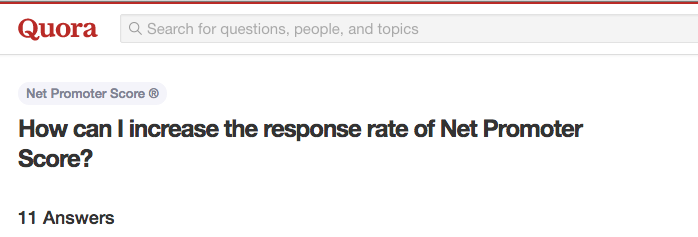
I’ve written a bunch of stuff since we really started cranking on marketing here at Drift earlier in the year.
146,693 emails, 50 blog posts, 9 SlideShare decks, two infographics, and two websites to be exact.
But for most of that early writing, my approach was wrong.
The way I had been writing copy was completely backwards.
The Mistake I Had Been Making Writing Copy

Regardless of what it was, whenever it came time to write something new, my first step would usually be to head on over to Google, find the latest copywriting tip or trick, and start planning out my copy.
Positioning frameworks, messaging guides, headline formulas, copy graders — you name it.
If Google said it would help me write better copy, I tried it.
And then I would start writing.
Make sure the headline isn’t longer than seven words – check.
Remember to show the benefits – check.
Pull up that list of “power” words you found and make sure to use at least one – got it.
Appeal to the emotional and rational parts of people’s brains – yup, think I got it.
That’s how I would write copy. Just like that.
As if writing great copy was as easy as filling in some type of Mad Lib.
See, I didn’t try all of those things because I thought I was a bad writer.
I tried all of those things because it’s really freaking hard to get people to pay attention to your business and understand what you actually do.
Words are hard.
Even if you’re an amazing writer, there are so many things working against you — from the fact that the average person only spends 15 seconds on your site, to the amount of noise from competing products, to everyone’s short attention spans (oh look, a new Snapchat message!)
It’s hard enough to try to explain your product in less than two sentences outloud to a friend — nevermind trying to do that in a line or two of copy on your website.
So I used the frameworks, headline formulas, and copy hacks as a crutch.
And judging by how popular those articles, frameworks, and formulas are, I’m not the only one that’s been writing copy this way.
The Problem With Using A Playbook To Write Copy
But there’s a huge problem when you start following those formulas and playbooks and writing that way:
That’s not how we think when we’re the ones buying something.
And that’s not how our prospects and customers think either.
I started to notice this right around the time that we changed up our welcome emails.
The only goal of our welcome email is to get someone to respond and tell us more about why they signed up for Drift, in their words.
Here’s the welcome email that comes from Matt, our Product Manager, whenever someone signs up for Drift:

Ever since we made that change, we’ve been getting daily responses.
Some days we only get two or three people who respond; some days we hear from more than 50 people.
Real people.
Using their own words.
Telling us why they signed up for Drift and what they’re hoping to accomplish.
It didn’t take long after this change to realize this was a game changer.
As replies started coming in, we noticed that the things our customers were saying were often times a lot clearer — and simpler — than some of the copy that we had been writing ourselves.



And one of the things new customers often tell us is that they signed up because they want to use Drift to talk to people while they were on their website.
That’s pretty damn simple.
And it’s crystal clear.
But because the copy we were writing was based on a formula or a playbook, we were always trying to get too cute or trying to be too pithy.
We were overthinking it and writing things like:
- “The best time to help your leads is real-time.”
- “Better engage your customers.”
- “Turn strangers into customers in seconds.”
- “Communicate with your customers when they care.”
Yuck.
And yeah, I know. “Talk to people while they’re live on your website” certainly won’t win any copywriting awards — but who cares?
This is what real people are coming to us for.
So instead of that Mad Libs style approach to writing copy, we started listening to our customers and using the words they were actually using.
And we stopped worrying about writing “killer” copy.
Instead, we’re worried about writing in a way that our prospects and customers will actually understand.
That’s it. That’s the only goal.
Slack has one of best brand voices, and I always find myself nodding along with the things they write.
And that’s because writing to be understood is actually one of their guiding principles when it comes to writing.

Make sense.
It’s that simple.
When writing marketing copy, read it out loud. Then ask yourself “Would I ever say it this way to someone if I was talking to them?”
— Jason Fried (@jasonfried) January 29, 2016
And one of the easiest ways to make sense is to use the words from real people that are in your target audience.
But what if you don’t have a lot of data, quotes from actual customers, or a bunch of email replies like we mentioned above?
Your customers words are already everywhere online.
Here are a few places you can look to find inspiration for your copy.
How To Find The Things Your Customers Are Saying
Twitter is a great tool for writing copy because often times people will:
- Re-write tweets in their own words so the tweet sounds original
- Re-write tweets in their own words so the tweet can fit in 140 characters
You can use this to your advantage. These are people saying things in their own words. Spend some time combing through the mentions for your company or about your products and look for what people said that’s different from what might be on your website.
This works really well when you launch something new. Keep an eye out for what people are saying around product launches and make updates to your copy or save good quotes that you can use for the future.
Quora

We have a tool that helps you measure Net Promoter Score inside of your app or web product, so I’ve spent a lot of time on Quora to try and figure out:
- How people talk about Net Promoter Score in their own words
- Which questions they might have about Net Promote Score (so the copy on our website can try and answer those questions).
Quora can be an incredible resource because the intent is so high. It’s one thing for a potential customer to think something — it’s another thing for them to go over to Quora and write a question they want answered.
Product Hunt
There are rarely brand new ideas or products anymore — and when you’re writing copy, you can use this to your advantage.
The great part about Product Hunt is that the community is super active, so there are usually a lot of comments from users of that particular product.
Just head over to Product Hunt and search for your competitor or any products that are similar to yours. Once you’re there, you can comb through all of the comments to help you write your copy.
For example, here’s a message I found when we were working on launching a new tool that integrated with Slack:

Amazon Reviews
Just like Product Hunt, Amazon can be a goldmine too.
Ever notice how many people write reviews for products on Amazon?
Just plug in something that is related to your business on Amazon, find a product, and then hunt through the reviews for copy ideas.
Even if you aren’t building a consumer product, there are plenty of other ways to find reviews. For example, say you’re a marketing software platform. There won’t be reviews for marketing software platforms on Amazon, but there will be reviews for books about marketing, and there will be copy that you can use in there — straight from the mouth of a potential customer.
The Only Way To Really Write Killer Copy
The secret to writing killer copy that your customers love isn’t buried in some messaging framework or headline generator.
If you want to improve your copywriting skills right now, start by using the things that your customers are already saying.
Don’t get too cute. Don’t try to be too catchy or pithy. Just try to write so people will understand you first.
That’s been the biggest lesson that I’ve learned so far about writing copy.
Hope you found this post helpful.




